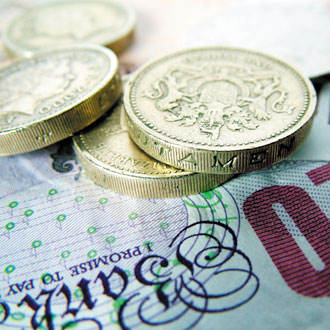Doctor leaders have suggested GPs should have at least a 2% pay uplift in 2017/18, to be in line with the ‘wider economy’.
In its submission to the Review Body on Doctors’ and Dentists’ Remuneration (DDRB), the the BMA argued that ‘doctors should be treated in line with the wider economy, where pay settlements continue to run at higher than the public sector pay policy cap, at around 2% currently’.
This comes despite the Government telling the DDRB to keep within its sustained 1% cap on public sector pay rises.
The BMA said it was ‘disappointed’ when the DDRB only recommended an uplift ‘in line with the public sector pay policy’ for 2016/17, which it said was ‘lending credence to the impression that DDRB is no longer acting independently’.
The BMA said: ‘We believe that DDRB should make its recommendations based on the value of doctors, not within any constraints imposed by governments.’
According to the BMA, ‘doctors are being unfairly punished by government with continuing real loss of earnings and increasing cost pressures, when pay rises above 1% are still regularly being seen across the economy’.
It said this comes ‘at a time when doctors are working harder than ever to deliver a safe and quality service to patients, often at the expense of their own health’.
Backing up its argument, it highlighted that the NHS ‘is facing a significant recruitment and retention crisis across the UK’, warning that this ‘will only be worsened by a low or zero pay increase’.
The BMA went on to reject the Department of Health’s request for the DDRB to make specific recommendations with regards to recruiting, retaining and motivating the growing cohort of salaried GPs.
The submission said: ‘We believe there is a significant lack of data currently available around sessional GPs (salaried and locum) on which to base any firm recommendations, for example around pay ranges, and how GPs choose to take a partnership, salaried or locums post.’
This followed NHS England’s argument last year that boosting GP practice funding would worsen salaried GP recruitment, because partners would not pass on the uplift.
The BMA also said it thinks there is ‘currently insufficient data for DDRB to make recommendations around staff working under new models of care, or as sessional GPs’, with the BMA instead ‘again seeking a fair and common recommendation across all doctors, whoever and wherever they are’.
On the long-running problem of estimating GP practice expenses, the BMA said it has set up a working group with NHS Employers and NHS England ‘to identify any possible data sources, perhaps including practice accounts’.
GPs in England received a 3.2% total funding uplift for the current financial year, of which 1% was calculated to the be pay uplift and 2.2% reimbursement to meet rising expenses facing practices including CQC fees and indemnity cover.
How much do GPs earn?
According to official Government statistics, GP partner earnings increased by nearly 2% in the last year for which statistics were available (2014/15), to £101,500, although this figure includes all GP income, not just take home pay for NHS work.
For the same time period, the income of salaried GPs decreased by almost 2% to £53,600, NHS Digital data suggested.
At the time, GP leaders said increase in partner earnings reflected the decrease in GP numbers, meaning that the partners left are having to do more work for the same pay.
The GPC also said determining GP partner earnings was ‘hugely complex’, and that any increase that followed ‘a decade of falling GP contractor income’ would ‘not even get close to offsetting the massive increase in workload and stress that partners are facing’.
Pulse October survey
Take our July 2025 survey to potentially win £1.000 worth of tokens













